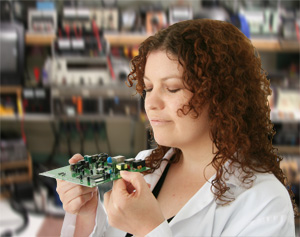The Standard Licence
Your Second Step Into Amateur Radio
The Standard Licence is higher than the Foundation Licence, but below the top graded Advanced Licence.
With the Standard Licence comes increased power, more bands, modes, and the ability to build or modify transmitting equipment. This middle grade licence is in line with the world standard. With its enhanced operating privileges comes a much greater depth of theory and regulatory knowledge.
After studying the syllabus topics for the Standard Licence, either at a course or through readily available material, it can take between 20 and 30 hours of study. Do remember to revise the Foundation Licence knowledge as some questions at the Standard Level include basic knowledge too.
The Standard Licence not only further opens up involvement in Amateur Radio enabling ready worldwide communication it can expand an interest in communications technology and be a solid launching base to a rewarding career in science, electronics, and communications.
 The standard licence operator can use either
home
The standard licence operator can use either
home
brew or commercially manufactured equipment. |
It may take a period of time for the ACMA to issue an invoice for the licence charge after the application forms have been completed. When the payment is processed, you will appear on the ACMA licence register and may begin transmitting. The ACMA licence register is available via this Link
Radio Bands You Can Use
The standard licence operator can
operate in the bands listed below using
the modes listed in the right hand column.
| Radio
band |
Frequency |
Permitted Emission Modes |
| 80 Metres |
3.500 - 3.700 MHz |
Any emission mode with a necessary bandwidth not exceeding 8 kHz |
| 40 Metres |
7.000 - 7.300 MHz |
| 20 Metres |
14.000 - 14.350 MHz |
| 15 Metres |
21.000 - 21.450 MHz |
| 10 Metres |
28.000 - 29.700 MHz |
Any emission mode with a necessary bandwidth not exceeding 16 kHz |
| 6 Metres |
50 - 54 MHz |
| 2 Metres |
144 - 148 MHz |
| 70 Centimetres |
430 - 450 MHz |
| 23 Centimetres |
1240 - 1300 MHz |
| 13 Centimetres |
2400 - 2450 MHz |
| 6 Centimetres |
5650 - 5850 MHz |
Note : These are general band ranges provided as a guide only, please ensure you consult
the ACMA LCD for specific frequency ranges, power limits and any special conditions.
Training For Your Licence
There are many radio clubs that offer Standard Licence training check the Radio Clubs section of this website. Additionally a CD based course that can be done at home. You will also need some support technical reference information. The ARRL handbook (preferably an early edition) or the Radio Theory handbook. You can also study at your own pace via a Multi-Media Course with the Radio and Electronics School. This course is supplied on two CDs. It covers theory and regulations, and normally takes about 4-5 weeks. Support on email from experienced trainers is provided should any questions or problems arise.
Please visit http://www.res.net.au for further information about the Standard Licence Multi-Media Course. Besides providing training the clubs are ideal to learn all about Amateur Radio. You can meet other hams, attend interesting lectures, and find out lots of information about its different facets. There are some good topics and activities too appearing on YouTube. The WIA webpages list most of the clubs that are offering training and assessment, and all WIA Assessors. If you have trouble finding a training club or an Assessment, then send an email to nationaloffice@wia.org.au
Assessments
The examination and callsign recommendation services previously provided by the WIA ceased on 1-Feb-2019. In future these services will be provided by the Australian Maritime College (AMC). More details will be provided as they come to hand.
| 
